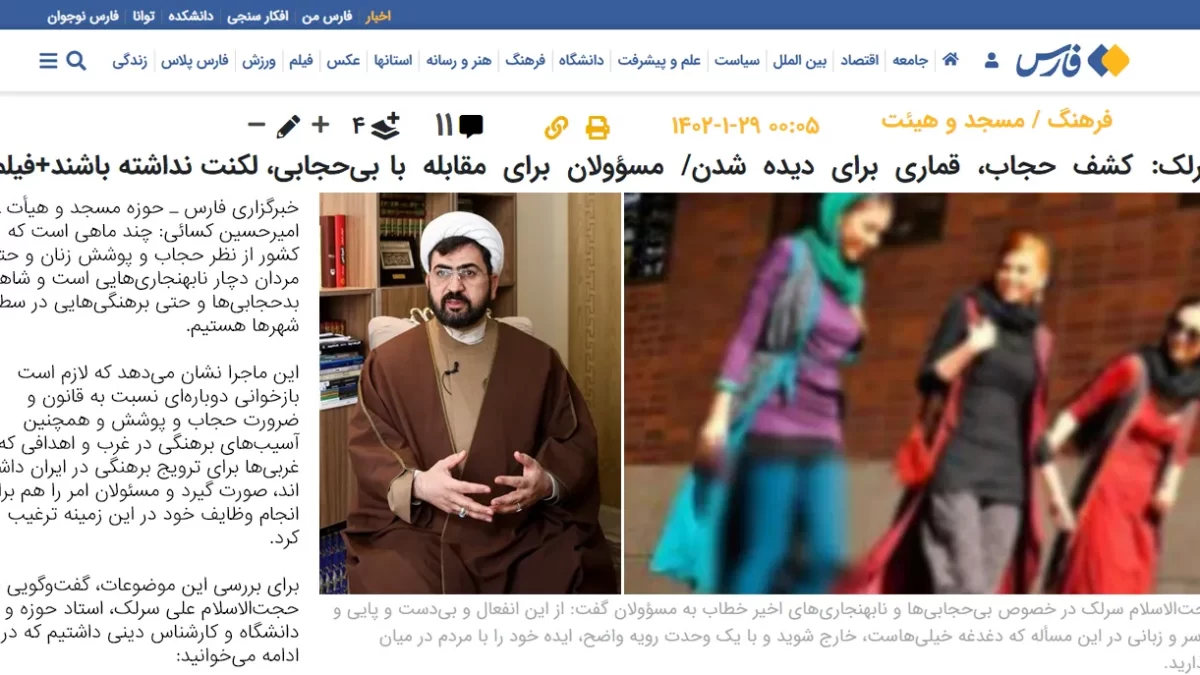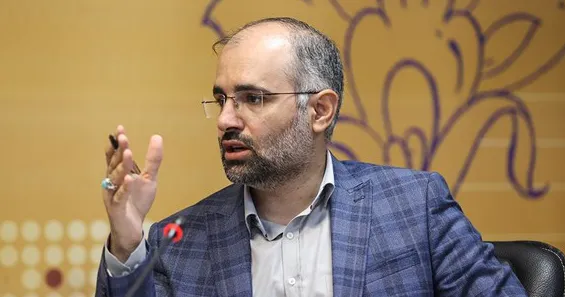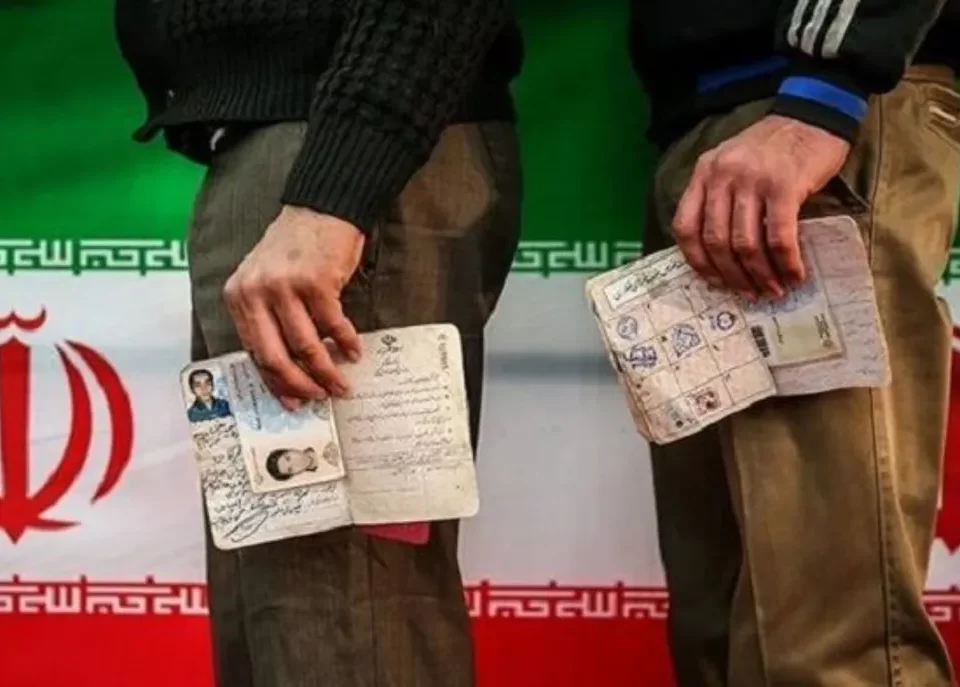
Media Review: Khabar Network, a Platform for Justifying Executions
May 5, 2023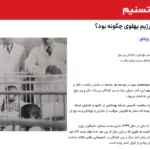
Media Review: Tasnim News Agency and Manipulative Handling of Information and Statistics
May 6, 2023In 2010, a campaign in Tel Aviv gained international attention. An advertising agency in Israel launched a campaign titled “Women To Go” to draw public attention to the threat of “human trafficking.” The company placed a number of volunteer women in a shop window in a mall, but their role was actually to raise awareness among passersby about the hidden reality of human trafficking.
The goal of this campaign, as explicitly stated in the video, was to draw public attention to the issue of human trafficking of women and make people aware of how it can be a significant danger to any society.
The women standing in the shop window tried to inform pedestrians about how they could participate in the campaign against sexual trafficking.
This campaign received media coverage and support in various countries around the world. Now, 13 years later, the Fars News Agency, a media outlet close to the Islamic Revolutionary Guard Corps (IRGC), has presented it to its audience with a photo, introducing it as follows: “Supplying women in Western shop windows for prostitution.”
Fars published this photo and claim in an article titled “Sarlek: Unveiling, a gamble to be seen / Officials should not have leniency in dealing with unveiledness” on April 18, 2023. This article is an interview with Hojatoleslam “Ali Sarlek,” whom they introduce as a religious scholar, seminary professor, and university expert.
This interview has no connection to the published image; it has merely been used to deceive the audience and document baseless statements made during the conversation.
In this interview, Sarlek states:
Hijab is one of God’s commandments, a religious obligation, and a rational and tangible social benefit that brings individuals and society to success and righteousness. The issue of hijab has also been placed against the face of false civilization, making it a political obligation. In fact, hijab is the sign, symbol, and element of a front in this cultural confrontation.
The high statistics of depression and suicide stemming from a sense of emptiness express the same matter. Nonetheless, the beauty of a woman’s knowledge and faith is part of her existential values, not her physical beauty. If she focuses on this aspect, it will undoubtedly be like gambling. She might win once or twice, but ultimately, the gambler is the ultimate loser, so gambling is wrong. It is very dangerous for someone to gamble with themselves and their existential capital.
Regarding the mandatory nature of covering, almost all countries agree on it; meaning that right now, no one is legally allowed to walk naked on the streets, and the police would arrest them. So, there is a legal and obligatory limit to clothing in the collective lives of all countries with diverse inclinations. However, the discussion is about how much this limit should be and what criteria should determine its extent based on reason, experience, and accepted standards.
We cannot say that hijab is purely a personal matter, just like someone saying in driving, “This car is mine, and I can drive it however I want at any speed.” But when my car is on a road with other cars, I have to adhere to traffic regulations. I cannot say it’s my own car. Yes, it’s your car, but because this car is in relation to other cars, it must comply with traffic rules.
This conversation and its framing serve as a good example for reviewing a set of media literacy concepts, including the following:
1. Biased and deceptive framing
Content framing is a media tactic that enables journalists to select aspects of reality that align with the knowledge, beliefs, and perspectives of the audience and present audience-friendly content. For this reason, media outlets pay attention to the beliefs and values of their audience. Audiences are often unaware of the role of content framing in shaping their beliefs and pay less attention to the literature and language used by journalists, which significantly influence their interpretation and understanding of information. Framing events and incidents is a professional act and a result of journalists’ skills. However, when journalism resorts to incorrect news framing, misinformation, disinformation, and misleading framing, the report can no longer be considered professional. Understanding how content is framed by media outlets helps us assess the alignment between the analysis we receive and reality. Fars News Agency has employed deceptive framing in this report. By selecting three photos and resorting to false and destructive claims and clichés, this news agency has attempted to prepare the ground for accepting baseless and misguided statements made during the conversation. Choosing a photo related to the campaign against the trafficking of girls and presenting baseless claims for this topic demonstrates a deceptive and biased framing.
2. Fake news
Media outlets affiliated with oppressive governments have no solution other than resorting to fake news and misinformation when they lack a plausible argument to justify an imposed policy. The news about women being displayed in shop windows for prostitution, based on a photo from a campaign against women trafficking, is an example of fake information in this report.
3. False clichés
The Fars News Agency reporter asks the interviewee, “What are the consequences of this exhibitionism in the West and the competition to be seen?” In response, the interviewee says, “… the beauty of a woman’s knowledge and faith is part of her existential values, not her physical beauty. If she focuses on this aspect, it is undoubtedly like a competition that she has lost. Such an act is like gambling. One may win once or twice, but ultimately the gambler is the loser of the game, so gambling is wrong. It is very dangerous for someone to gamble with themselves and their existential values.” Considering freedom of expression as synonymous with competition to be seen and attributing it to the West are among the harmful and false clichés promoted by the Islamic Republic and its affiliated media outlets. However, neither is freedom of expression exclusive to the West nor is there any connection between freedom of expression and self-presentation. These clichés are constructed by opponents of freedom of expression and are promoted by media outlets under their control. Media outlets use clichés to effectively communicate with their audience, as they know that the audience is familiar with them and easily establishes a connection. However, an aware and thoughtful audience criticizes these clichés and does not allow them to become part of their behavioral culture through questioning.
4. Fallacy
The interviewee attempts to make their statements acceptable through fallacies. When the interviewer is asked if wearing hijab is a personal matter, they say, “We cannot say that hijab is merely a personal matter! It’s like someone driving a car and saying, ‘This is my car, and I can drive it however I want and at any speed.’ But when my car is on a road where other cars are present, I have to abide by traffic regulations. I can’t say it’s my car. Yes, it’s your car, but because this car is in relation to other cars, it must follow traffic rules.”
Associating traffic rules with the freedom of women’s clothing is a fallacy and being trapped in a false analogy. Because the freedom of clothing is a right for women, and according to the Constitution of the Islamic Republic, even with the existence of laws, one cannot disregard people’s rights.
The interviewee elsewhere states, “Regarding the mandatory nature of hijab, practically all countries agree on it. That means right now, no one is legally allowed to appear naked on the streets in any country, and the police would arrest them.”
Using fallacies, the interviewee equates “nudity” and “immodesty” with the freedom of clothing and defends mandatory hijab.
5. Unfounded Claims
The speaker resorts to fabricated claims to prove their arguments without being challenged by the interviewer. They say:
“Hijab is one of the divine commands; it is both God’s command and a religious obligation, as well as a rational and objective social benefit. If one’s body and physical beauty become the subject of attracting others’ attention, that person is practically trapped in a false circle because, firstly, during old age, attractions inevitably disappear, and in old age, they don’t have the means of competition and cannot draw public attention. What will they do? It will lead to depression and meaninglessness. Even in youth and beauty, competitions that can be based on physical appearance are highly detrimental and dangerous. The high statistics of depression and suicide resulting from a sense of emptiness indicate the same.”
In a professional and impartial conversation, a journalist does not pass over baseless and unsupported statements without challenging the interviewee. But when the interviewee and the interviewer promote a particular line of thought, any fabricated and unsupported claim can be allowed to prove their claims. The journalist does not ask which research results have shown that suicide in girls is more due to failure in attracting others’ attention than suicide resulting from abuse, rights violation, discrimination, poverty, etc.
The function of the propaganda machine of oppressive governments is to promote policies and dominant ideologies. In this regard, resorting to fake news and information, distorting realities, using fallacies, and presenting unfounded claims is common practice, and nothing else can be expected from such unperceptive media. It is important for the audience to know which media and what content they are facing and how they can distinguish between real and fake news and analysis. Critical thinking and having doubts about the accuracy of claims, information, and analyses from government media are a reliable solution that should be taken seriously.
مرور رسانهها؛ دروغهای شاخدار خبرگزاری فارس برای ترویج حجاب
سال ۲۰۱۰ کمپینی در «تلآویو» توجه جهانی را جلب کرد. یک آژانس تبلیغاتی در اسرائیل با راهاندازی کمپینی با عنوان «Women To Go» کوشید توجه عموم را نسبت به تهدیدی به نام «قاچاق انسان» جلب کند. این شرکت در اقدامی ابتکاری و سمبلیک، تعدادی از زنان داوطلب را در ویترین مغازهای در یک پاساژ به فروش گذاشت اما کار آنها در واقع آگاه کردن رهگذران با واقعیتی پنهان به نام قاچاق زنان بود.
هدف این کمپین همانطور که به صراحت در این ویدیو اعلام شده، جلب توجه عمومی نسبت به مساله قاچاق زنان عنوان شده است:
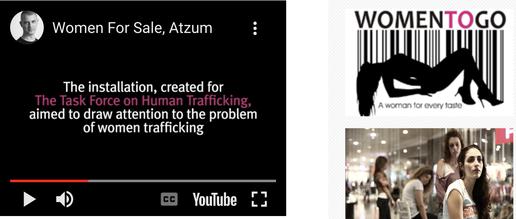
برگزار کنندگان این کمپین کوشیدند جنایت زیرزمینی قاچاق زنان را به فضای عمومی بکشانند و مردم را متوجه این مساله کنند که چهگونه قاچاق زنان میتواند خطری بزرگ برای هر جامعهای باشد.
زنان ایستاده در ویترین این مغازه تلاش کردند به عابران اطلاع دهند که چهگونه میتوانند در کمپین مبارزه با قاچاق جنسی شرکت کنند.
این کمپین در کشورهای مختلف دنیا پوشش رسانهای گرفت و حمایت شد. حالا ۱۳ سال بعد، خبرگزاری «فارس»، رسانه نزدیک به سپاه پاسداران انقلاب اسلامی با انتشار عکسی از این کمپین، آن را این گونه به مخاطبان خود معرفی کرده است: «عرضه زنان در ویترین مغازههای غرب برای تنفروشی».
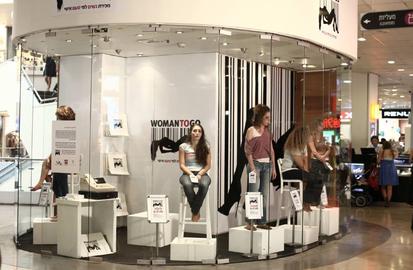
فارس این عکس و این ادعا را در مطلبی با عنوان «سرلک: کشف حجاب، قماری برای دیده شدن/ مسوولان برای مقابله با بیحجابی، لکنت نداشته باشند» در روز ۲۹ فروردین ۱۴۰۲ منتشر کرده است. این مطلب، گفتوگویی است با حجتالسلام «علی سرلک» که او را استاد حوزه و دانشگاه و کارشناس دینی معرفی کرده است.
این گفتوگو ارتباطی با تصویر منتشر شده ندارد، تنها از آن برای فریب مخاطب و مستند کردن اظهارات بیپایه گفتوگو شونده استفاده شده است.
سرلک در این گفتوگو میگوید:
- حجاب یکی از اوامر الهی است که هم فرمان خدا است و هم واجب دینی است و هم یک مصلحت عقلایی و عینی اجتماعی است که فرد و جامعه را به فلاح و صلاح میرساند. مساله حجاب از این جهت در برابر وجه تمدنی جریان باطل هم قرار گرفته است و به همین خاطر یک واجب سیاسی هم محسوب میشود. یعنی بهواقع عملاً حجاب نشان، علامت و اِلمان یک جبهه در این مواجهه تمدنی است.
- آمار بالای افسردگی و مبادرت به خودکشی ناشی از احساس پوچی بیانگر همین امر است. به هر حال، زیبایی معرفتی و ایمانی زن از ارزشهای وجودی او است، نه زیباییهای جسمی او که اگر بخواهد به این جنبه بپردازد، حتماً مانند یک مسابقهای است که این مسابقه را باخته است. چنین کاری مثل قمار کردن است. ممکن است طرف یکی دو بار هم ببرد ولی قمارباز نهایتاً بازنده بازی است، پس قماربازی غلط است. کسی که راجع به خودش و سرمایه وجودیش قمار کند، بسیار خطرناک است.
- راجع به اصل اجباری بودن پوشش، تحقیقاً همه کشورها بر آن اتفاق نظر دارند؛ یعنی همین الآن کسی به لحاظ قانونی در هیچ کشوری اجازه ندارد در خیابانها برهنه بیاید و پلیس او را دستگیر میکند. پس یک حدی از پوشش، قانونی و قهری در زندگیهای جمعی همه کشورها با گرایشهای متنوع وجود دارد. منتها بحث این است که این حد چه اندازه باشد و براساس عقل، تجربه و معیارهای مورد پذیرش، میزان آن چهقدر باشد؟
- نمیتوانیم بگوییم حجاب صرفاً یک امر شخصی است! مثل این که کسی در رانندگی بگوید این ماشین من است و هر طور که دوست داشته باشم و با هر سرعتی رانندگی میکنم. در صورتی که وقتی ماشین من در جادهای است که تمام ماشینهای دیگر هم هستند، باید به مقررات ترافیکی تن بسپارم. نمیتوانم بگویم ماشین خودم است. بله، ماشین شما است اما چون این ماشین در نسبت با ماشینهای دیگر قرار میگیرد، باید قواعد ترافیکی را رعایت کند.
این گفتوگو و نحوه فریمبندی آن، نمونه خوبی برای مرور مجموعهای از مفاهیم سواد رسانهای شامل موارد زیر است:
۱- فریمبندی جهتدار و فریبکارانه
فریمبندی محتوا، تاکتیکی رسانهای است که خبرنگاران را قادر میسازد تا جنبههایی از واقعیت که با دانش، عقاید و نگرشهای موجود مخاطب ارتباط برقرار میکنند را برگزیند و محتوایی مخاطبپسند ارایه کنند. به همین دلیل رسانهها در فریمبندی محتوا، به باورها و ارزشهای مخاطبان خود توجه دارند. مخاطبان معمولا متوجه نقش فریمبندی محتوا در شکلدهی به باورهای آنها نیستند و کمتر به این مهم توجه دارند که حتی ادبیات و زبانی که خبرنگاران به کار میبرند، در تفسیر و فهم آنها از اطلاعات موثر است. فریمبندی و شکل دادن به وقایع و رویدادها، اقدامی حرفهای و ناشی از مهارت روزنامهنگاران است ولی وقتی روزنامهنگاری در فریمبندی تحلیل خود به اخبار نادرست، مغالطه، دیس اینفورمیشن و مغالطه متوسل میشود، دیگر نمیتوان آن گزارش را حرفهای خواند. دانستن نحوه فریمبندی مطالب توسط عوامل رسانهها کمک میکند دریابیم تحلیلی که دریافت میکنیم، چه تناسبی با واقعیت دارد. خبرگزاری فارس در این گزارش به یک فریمبندی فریبکارانه روی آورده است. این خبرگزاری با انتخاب سه عکس و با توسل به ادعاها و کلیشههای جعلی و مخرب، کوشیده است پذیرش ادعاها و اظهارات بیاساس و کجاندیشانه گفتوگو شونده را آماده سازد. انتخاب یک عکس کمپین مبارزه با قاچاق دختران به اسم فروش زنان در ویترین مغازهها در غرب و طرح ادعاهای بیاساس برای این مطلب قالبی فریبکارانه و جهتدار بخشیده است.
۲- خبر جعلی
رسانههای وابسته به حکومتهای استبدادی وقتی دارای استدلال قابل عرضه برای توجیه یک سیاست تحمیلی نیستند، چارهای جز توسل به اخبار و اطلاعات جعلی ندارند. خبر عرضه زنان در ویترین مغازهها برای تنفروشی با استناد به عکسی از یک کمپین مبارزه با قاچاق زنان، نمونهای از اطلاعات جعلی در این گزارش است.
۳- کلیشههای جعلی
خبرنگار خبرگزاری فارس از گفتوگو شونده میپرسد: «این برهنگی در غرب و رقابت برای دیده شدن چه عواقبی برای زنان دارد؟»
مصاحبهشونده نیز در پاسخ میگوید: «… زیبایی معرفتی و ایمانی زن از ارزشهای وجودی او است، نه زیباییهای جسمی او که اگر بخواهد به این جنبه بپردازد، حتماً مانند یک مسابقهای است که این مسابقه را باخته است. چنین کاری مثل قمار کردن است. ممکن است طرف یکی دو بار هم ببرد ولی قمارباز نهایتاً بازنده بازی است، پس قماربازی غلط است. کسی که راجع به خودش و سرمایه وجودیش قمار کند، بسیار خطرناک است.»
برابر دانستن آزادی پوشش با رقابت برای دیده شدن و نسبت دادن آن به غرب، از جمله کلیشههای مضر و جعلی است که جمهوری اسلامی و رسانههای وابسته آن را تبلیغ میکنند. حال آن که نه آزادی پوشش مختص غرب است و نه ارتباطی بین آزادی پوشش و خودنمایی وجود دارد. این کلیشهها ساخته مخالفان آزادی پوشش هستند که در رسانههای در اختیار آن را تبلیغ میکنند. رسانهها از کلیشهها برای ارتباطگیری موثر با مخاطبان استفاده میکنند، چون میدانند مخاطبان با آن آشنا هستند و به سادگی با آن ارتباط برقرار میسازند. ولی مخاطب آگاه و متفکر این کلیشهها را نقد میکند و با پرسشگری اجازه نمیدهد کلیشهها به فرهنگ رفتاری او تبدیل شوند.
۴- مغالطه
مصاحبه شونده با توسل به مغالطه میکوشد اظهارات خود را قابل پذیرش سازد. مصاحبه شونده وقتی در برابر این پرسش قرار میگیرد که آیا پوشش امری شخصی است، میگوید: «نمیتوانیم بگوییم حجاب صرفاً یک امر شخصی است! مثل این که کسی در رانندگی بگوید این ماشین من است و هر طور که دوست داشته باشم و با هر سرعتی رانندگی میکنم. در صورتی که وقتی ماشین من در جادهای است که تمام ماشینهای دیگر هم هستند، باید به مقررات ترافیکی تن بسپارم. نمیتوانم بگویم ماشین خودم است. بله، ماشین شما است اما چون این ماشین در نسبت با ماشینهای دیگر قرار میگیرد، باید قواعد ترافیکی را رعایت کند.»
نسبت دادن قوانین راهنمایی و رانندگی به آزادی پوشش زنان، یک مغالطه و قرار گرفتن در یک دور باطل است، چراکه آزادی پوشش حق زنان است و طبق قانون اساسی همین نظام جمهوری اسلامی، حتی با وضع قوانین نمیتوان حقوق مردم را تضییع کرد.
مصاحبه شونده در جایی دیگر میگوید: «راجع به اصل اجباری بودن پوشش، تحقیقاً همه کشورها بر آن اتفاق نظر دارند؛ یعنی همین الآن کسی به لحاظ قانونی در هیچ کشوری اجازه ندارد در خیابانها برهنه بیاید و پلیس او را دستگیر میکند.»
او با توسل به مغالطه، «نوود» و برهنگی را با آزادی پوشش یکی گرفته و از حجاب اجباری دفاع میکند.
۵- ادعاهای بدون فکت
گفتوگو شونده برای اثبات استدلالهای خود، به ادعاهای جعلی روی میآورد، بدون آن که از طرف مصاحبه شونده به چالش کشیده شود. او میگوید:
- حجاب یکی از اوامر الهی است که هم فرمان خدا است و هم واجب دینی است و هم یک مصلحت عقلایی و عینی اجتماعی است.
- اگر بدن و زیباییهای ظاهری او موضوع جلب توجه دیگران باشد، این انسان عملاً در یک دور باطل قرار میگیرد، چون اولاً در دوران پیری بالاخره جاذبهها به صورت قهری وجود ندارد و در دوره پیری ابزار رقابت را ندارد و نمیتواند جلب توجه عمومی کند. چه خواهد کرد؟ افسردگی و بیمعنایی زیادی بر چنین فکر و بینش پوچی سایه خواهد افکند. حتی در دوران جوانی و زیبایی هم رقابتهایی که میتواند با بدننمایی انجام دهد، رقابتهای بسیار آسیبزا و خطرآفرینی هستند. آمار بالای افسردگی و مبادرت به خودکشی ناشی از احساس پوچی بیانگر همین امر است.
در یک گفتوگوی حرفهای و بیطرفانه، خبرنگار با به چالش کشیدن مصاحبه شونده، از روی اظهارات بیپایه و بدون سند و مدرک عبور نمیکند. ولی وقتی مصاحبه شونده و مصاحبه کننده یک خط فکری را تبلیغ میکنند، طرح هر ادعای جعلی و بیسند برای اثبات ادعاها مجاز میشود. خبرنگار نمیپرسد نتایج کدام تحقیقات نشان داده که خودکشی در دختران به دلیل شکست در جلب توجه دیگران بیشتر از خودکشی در اثر تجاوز، تضییع حقوق، تبعیض، فقر و … بوده است؟
کار دستگاه تبلیغاتی حکومتهای استبدادی، تبلیغ سیاست و تفکر حاکم است و در این راستا توسل به اخبار و اطلاعات جعلی، وارونه جلوه دادن واقعیتها، توسل به مغالطه و طرح ادعاهای بدون فکت و سند امری معمول است و انتظاری جز این از چنین رسانههایی غیرواقعبینانه است. مهم این است که مخاطب بداند با چه رسانهای و چه محتوایی روبهرو است و چهگونه میتواند بین اخبار واقعی و جعلی، تمایز قائل شود. تفکر انتقادی و داشتن تردید نسبت به صحت ادعاها، اطلاعات و تحلیلهای رسانههای حکومتی، یک راه حل قابل اتکا است که باید جدی گرفت.

